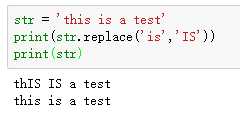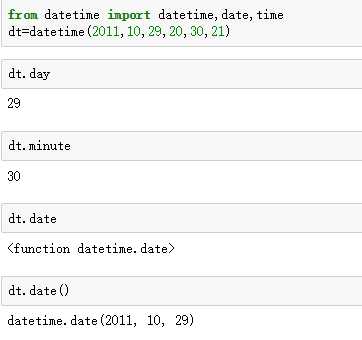标签:val plot expr lib users lse str modify form
Tab补全(任意路径Tab)
内省(函数:?显示文档字符串,??显示源代码;结合通配符:np.* load *?)
%load .py
ctrl-c(强行中断)
%timeit(执行时间)%debug? %pwd
%matplotlib inline(否则你创建的图可能不会出现)
单行注释#
多行注释,多行字符串‘’‘ ’‘’
Q2:赋值,浅拷贝和深拷贝
 1、赋值:简单地拷贝对象的引用,两个对象的id相同。
1、赋值:简单地拷贝对象的引用,两个对象的id相同。
2、浅拷贝:创建一个新的组合对象,这个新对象与原对象共享内存中的子对象。
3、深拷贝:创建一个新的组合对象,同时递归地拷贝所有子对象,新的组合对象与原对象没有任何关联。虽然实际上会共享不可变的子对象,但不影响它们的相互独立性。
is/is not(检查两个引用是否指向同一个对象)
Q4:is和==
只有数值型和字符串型,并且在通用对象池中的情况下,a is b才为True,否则当a和b是int,str,tuple,list,dict或set型时,a is b均为False。
Q3:可迭代对象,迭代器,生成器
 字符串是不可变的序列
字符串是不可变的序列
Q5:.replace()和修改有什么区别
不改变原str内容

字符串格式化:‘{0:.2f} {1:s} are worth US${2:d}‘.format(4.5560,‘Argentine Pesos‘,1)
val.encode(‘utf-8‘) val.decode(‘utf-8‘)
Q6:为什么有的要()有的不要

.day is not a method, you do not need to call it.

 datetime(2019,2,26,20,30,21).strftime(‘%m/%d/%Y %H:%M‘):将datetime转换为字符串
datetime(2019,2,26,20,30,21).strftime(‘%m/%d/%Y %H:%M‘):将datetime转换为字符串
datetime.strptime(‘20091031‘,‘%Y%m%d‘):将字符串转换为datetime
 如果某个条件为True则后面的elif和else代码怪则不会执行
如果某个条件为True则后面的elif和else代码怪则不会执行
continue:跳过continue条件值进入下一次循环
break:到达条件值break结束循环(只结束最内层for循环,外层for循环继续运行)
while条件符合
pass
三元表达式:value=true-expr if condition else false-expr
python for data analysis chapter1~2
标签:val plot expr lib users lse str modify form
原文地址:https://www.cnblogs.com/janekim/p/10440853.html